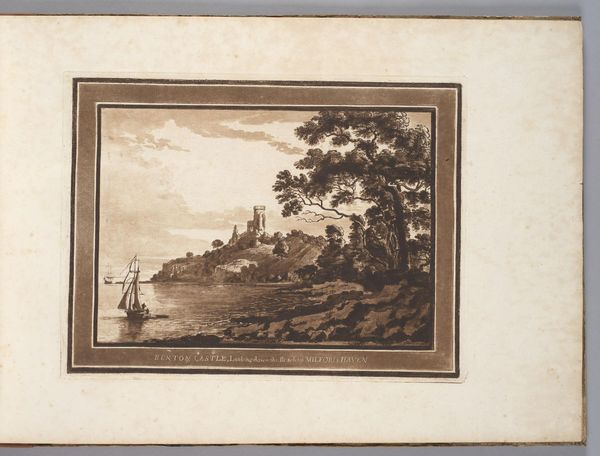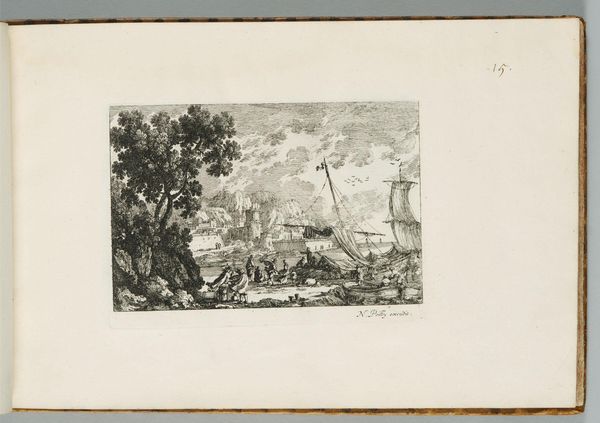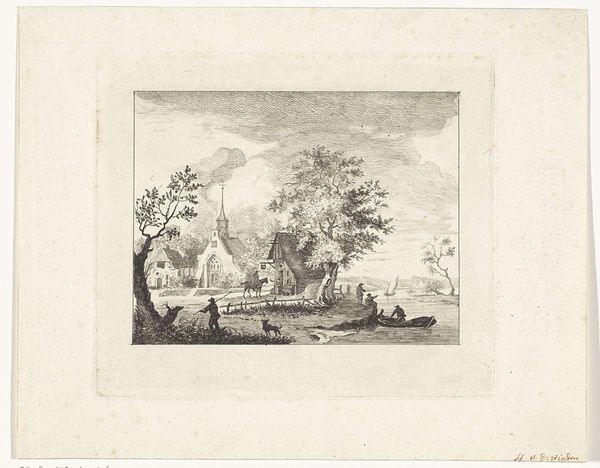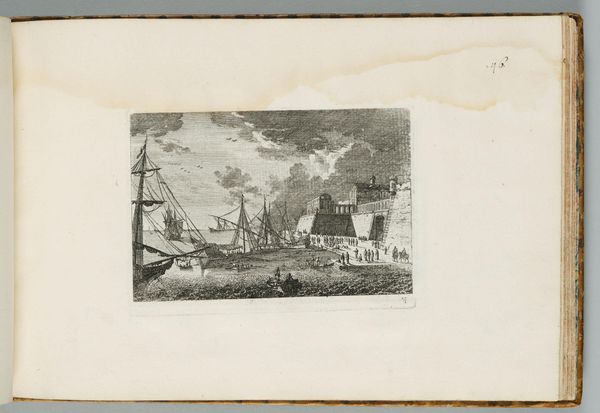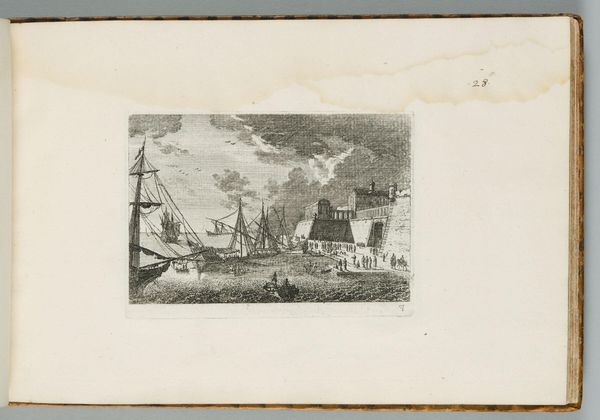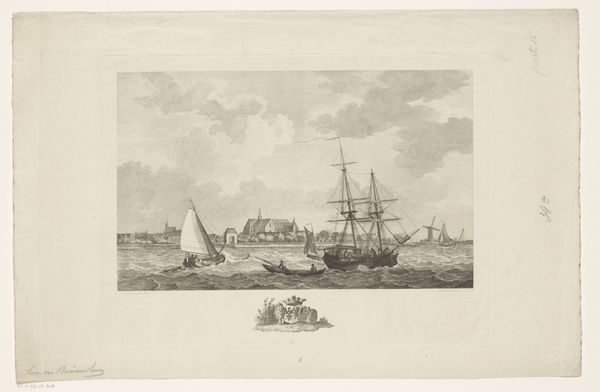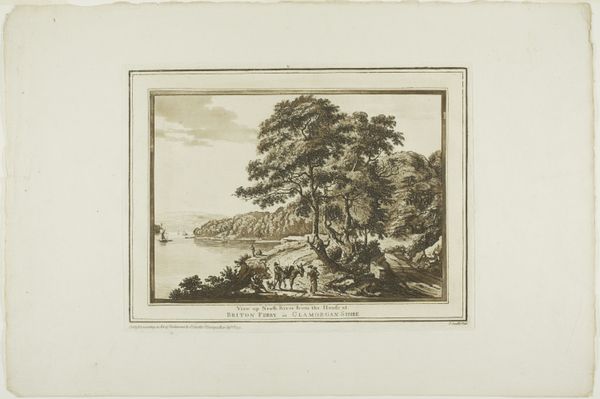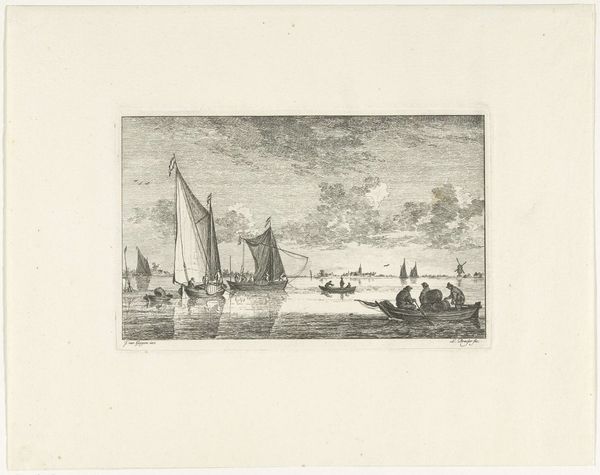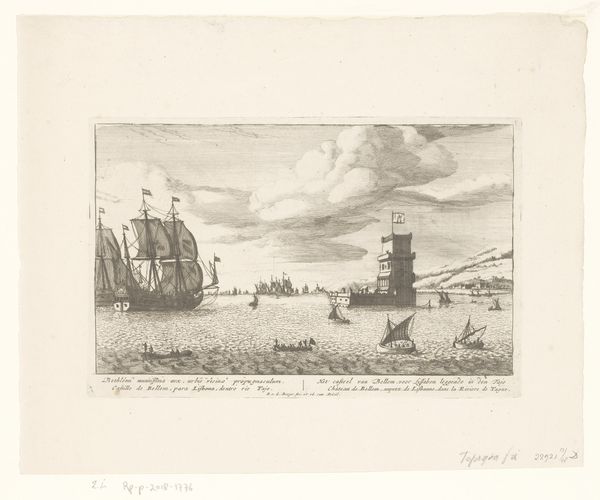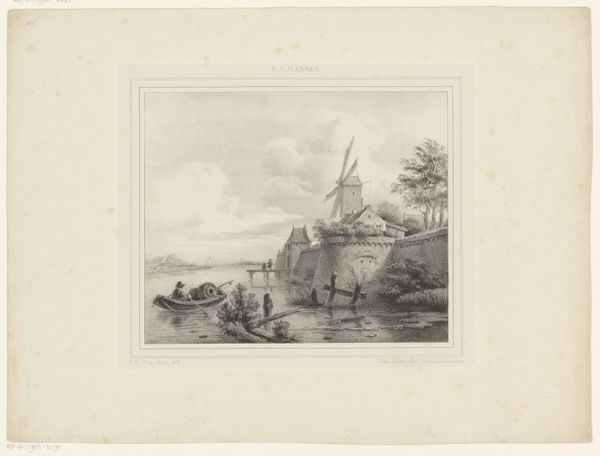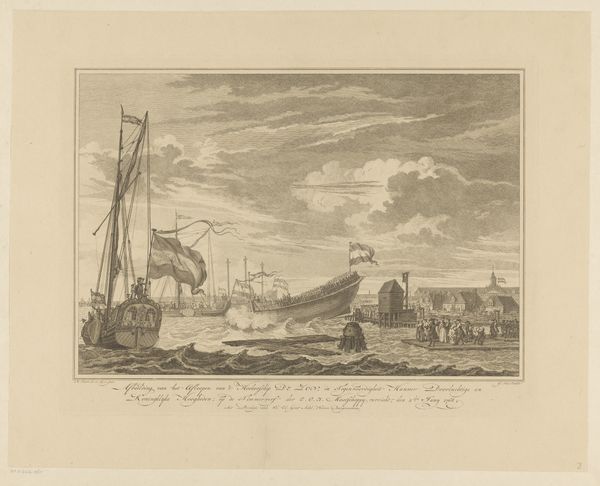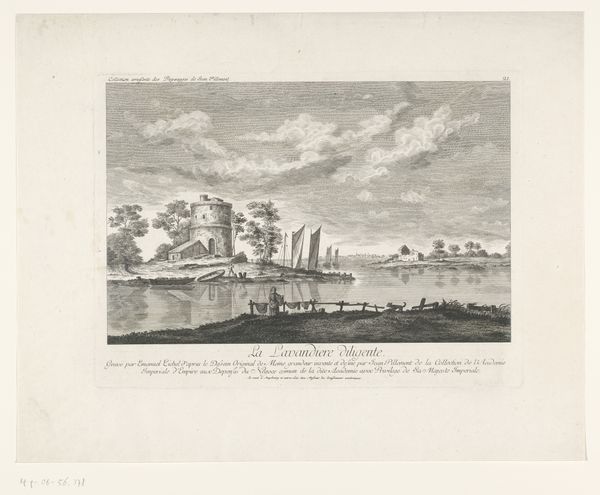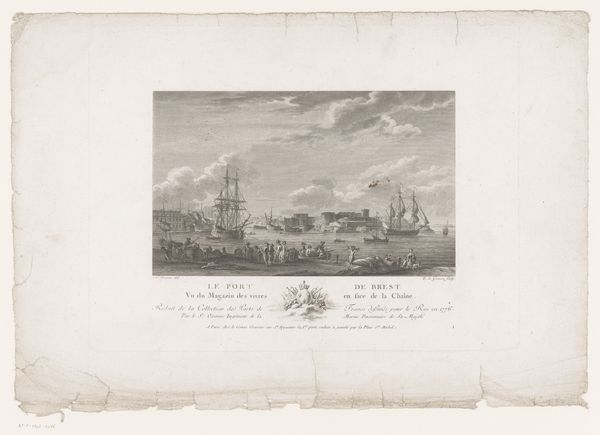
Benton Castle Looking down the Reach to Milford Haven, from Twelve Views in Aquatinta from Drawings taken on the Spot in South Wales 1773 - 1775
0:00
0:00
aquatint, drawing, print, etching
#
aquatint
#
drawing
#
neoclassicism
# print
#
etching
#
landscape
#
cityscape
Dimensions: 182 × 258 mm (image); 238 × 314 mm (plate); 360 × 525 mm (sheet)
Copyright: Public Domain
Editor: This is "Benton Castle Looking down the Reach to Milford Haven" created between 1773 and 1775 by Paul Sandby. It’s an aquatint and etching print. The composition, with the castle in the distance and the sailboat in the foreground, creates this picturesque scene. What are your thoughts on this particular landscape? Curator: Well, the very act of creating these “Twelve Views in Aquatint” speaks volumes about the burgeoning interest in representing and consuming landscape, and by extension the nation. Ask yourself: who was the audience for these images? The rising middle class, perhaps? And what did these carefully composed scenes offer them? Editor: Perhaps a sense of ownership or familiarity with places they hadn't physically visited? Curator: Exactly. These images are not simply records of places, but carefully constructed representations laden with ideology. Think about the ‘picturesque’ aesthetic – the carefully framed composition, the romantic ruin, even the atmospheric effects achieved through aquatint and etching all contributed to a very particular way of seeing the British landscape. This allowed people to experience culture without necessarily having money and education. What might that suggest about societal shifts happening at the time? Editor: That art became more available to middle class citizens and was meant to convey an idea of national identity? Curator: Precisely! Sandby wasn't just depicting Benton Castle. He was participating in a larger project of constructing a national image. The print, in effect, becomes a commodity. The social and political implications of making these scenes available as commodities – is an interesting aspect to consider. Editor: It’s fascinating to consider how these prints played a role in shaping a sense of British identity! Curator: Absolutely! Reflecting on how the production and reception of landscape art intersected with the public sphere and ideas of national identity gives me a more holistic understanding of the art and it's meaning.
Comments
No comments
Be the first to comment and join the conversation on the ultimate creative platform.
